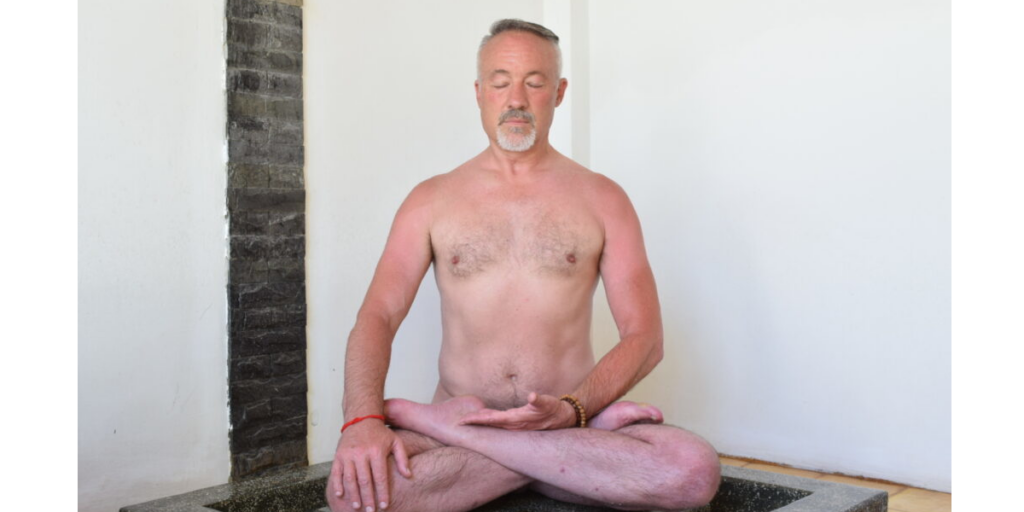My Thoughts of Yoga – Issues for Men

Being a man in today’s fast paced and over stimulated society can be very difficult. We are bombarded with information telling us how to act, how to live, and how to treat others, much of this information coming from different forms of media and often with opposing viewpoints and ideas. Learning how to disseminate this information and apply it to our own lives becomes overwhelming and causes even more stress than if we lived our lives in a cave with no contact to the outside world. Sometimes I think that it would be better to be cut off from everything, although I would miss the wonderful people I am connected to.
Nature has a cure for every ill. This feature is a built-in necessity to sustain life on the planet. If nature were not able to cure itself from disease, life on Earth would have vanished millions of years ago. All the forms of vegetation, including the trees, flowers, fruits and vegetables, as well as all the animals and insects down to the smallest amoeba and bacteria, are equipped with highly sophisticated defense mechanisms to maintain their own and the planet’s existence.
Man’s immune system is the most sophisticated among all species and can develop immunity to any invading organism. The power of our healing system, however, depends on our thoughts, feelings, the foods we eat, the quality of the air we inhale, the water we drink, the environment we are in, and the things we choose to do, see and hear. If all or most of these various influences make us feel good, our immune system remains efficient. Even one lingering depressing thought or fearful emotion is sufficient to suppress the immune system, which may make our body susceptible to invading microorganisms. Recent research found that toxic personalities have a much higher risk of becoming ill than positive personalities do.
In looking at some of the issues we face, as men, that Yoga might provide benefits for the list seems to be endless. Living in a world where we move less and less and eat food that is lacking in many, if not all, nutritional values are just the beginning. Our work and home environments thrive on stress and with these combinations we find ourselves dealing with physical pain and advanced aging, lack of sleep or even the inability to fall asleep at all, leading to sexual performance issues causing even more stress and self-esteem problems, which then leads right back to the start of a vicious cycle of lack of self-care making everything worse.
When some people think of yoga, they imagine having to stretch like a gymnast. That makes them worry that they’re too old, unfit, or “tight” to do yoga. The truth is you’re never too old to improve flexibility.
The series of yoga poses called asanas work by safely stretching your muscles. This may release the lactic acid that builds up with muscle use, which may cause stiffness, tension, pain, and fatigue. In addition, yoga increases the range of motion in joints. It may also increase lubrication in the joints. The outcome is a sense of ease and fluidity throughout your body.
Yoga stretches not only your muscles but all of the soft tissues of your body. That includes ligaments, tendons, and the fascia sheath that surrounds your muscles. And no matter your level of yoga, you most likely will see benefits in a very short period of time. In one study, participants had up to 35% improvement in flexibility after only eight weeks of yoga. The greatest gains were in shoulder and trunk flexibility.
Some styles of yoga, such as ashtanga and power yoga are more vigorous than others. Practicing one of these styles will help you improve muscle tone. But even less vigorous styles of yoga, such as Iyengar or hatha, which focuses on less movement and more precise alignment in poses, can provide strength and endurance benefits.
Many of the poses, such as downward dog, upward dog, and the plank pose, build upper-body strength. This becomes crucial as people age. The standing poses, especially if you hold them for several long breaths, build strength in your hamstrings, quadriceps, and abdominal muscles. Poses that strengthen the lower back include upward dog and the chair pose. When practiced correctly, nearly all poses build core strength in the deep abdominal muscles.
With increased flexibility and strength comes better posture. Most standing and sitting poses develop core strength. That’s because you’re counting on your deep abdominals to support and maintain each pose. With a stronger core, you’re more likely to sit and stand “tall.” Another benefit of yoga is the increased body awareness. This heightened awareness tells you more quickly when you’re slouching or slumping so you can adjust your posture.
Because of the deep, mindful breathing that yoga involves, lung capacity often improves. This in turn can improve sports performance and endurance. But yoga typically isn’t focused on aerobic fitness the way running or cycling are. Taking an intense power yoga class that gets you breathing hard in a heated room, however, can provide an aerobic benefit.
Most forms of yoga emphasize deepening and lengthening your breath. This stimulates the relaxation response — the opposite of the fight-or-flight adrenaline boost of the stress response.
Even beginners tend to feel less stressed and more relaxed after their first class. Some yoga styles use specific meditation techniques to quiet the constant “mind chatter” that often underlies stress. Other yoga styles depend on deep breathing techniques to focus the mind on the breath which then helps to calm the mind.
Among yoga’s anti-stress benefits are a host of biochemical responses. For example, there is a decrease in catecholamines, the hormones produced by the adrenal glands in response to stress. Lowering levels of hormone neurotransmitters — dopamine, norepinephrine, and epinephrine — creates a feeling of calm. Some research points to a boost in the hormone oxytocin. This is the so-called “trust” and “bonding” hormone that’s associated with feeling relaxed and connected to others.
Harder to pin down and research scientifically, concentration and the ability to focus mentally are common benefits you’ll hear yoga students talk about. The same is true with mood. Nearly every yoga student will tell you they feel happier and more contented after class. Recently, researchers have begun exploring the effects of yoga on depression, a benefit that may result from yoga’s boosting oxygen levels to the brain. Yoga is even being studied as an adjunct therapy to relieve symptoms of obsessive-compulsive disorder.
Perhaps one of the most studied areas of the health benefits of yoga is its effect on heart disease. Yoga has long been known to lower blood pressure and slow the heart rate. A slower heart rate can benefit people with high blood pressure, heart disease, and stroke. Yoga was a key component to the heart disease program designed by Dean Ornish, MD. This was the first program to partly reverse heart disease through lifestyle and diet rather than surgery. On a biochemical level, studies point to a possible anti-oxidant effect of yoga. And yoga has been associated with decreased cholesterol and triglyceride levels as well as a boost in immune system function.
As yoga has become more popular in the West, medical researchers have begun studying the benefits of therapeutic yoga. This is also called integrative yoga therapy or IYT. It’s used as an adjunct treatment for specific medical conditions, from clinical depression to heart disease. Yoga benefits other chronic medical conditions, relieving symptoms of asthma, back pain, and arthritis. Most worldwide clinical studies are happening outside of the U.S. But even the NIH has funded clinical trials on yoga and its health benefits for insomnia and multiple sclerosis.
Some studies have suggested that yoga may have a positive effect on learning and memory. Other researchers have been studying whether yoga can slow the aging process, increase a person’s sense of self-acceptance, or improve energy levels.
Some potential benefits of yoga may be hard to study scientifically. For instance, yoga has been said to increase spiritual awareness. Nevertheless, there is an abundance of anecdotal claims for what yoga can do. Go to any yoga studio and listen to students after class. Some will even tell you that yoga can help improve marriages and relationships at work.
Finally, through to use of flexibility, stress relief and strengthening of core muscles along with breath control the proof that yoga improves your sexual performance, both stamina and increased pleasure, is realized by almost every student I have worked with.




